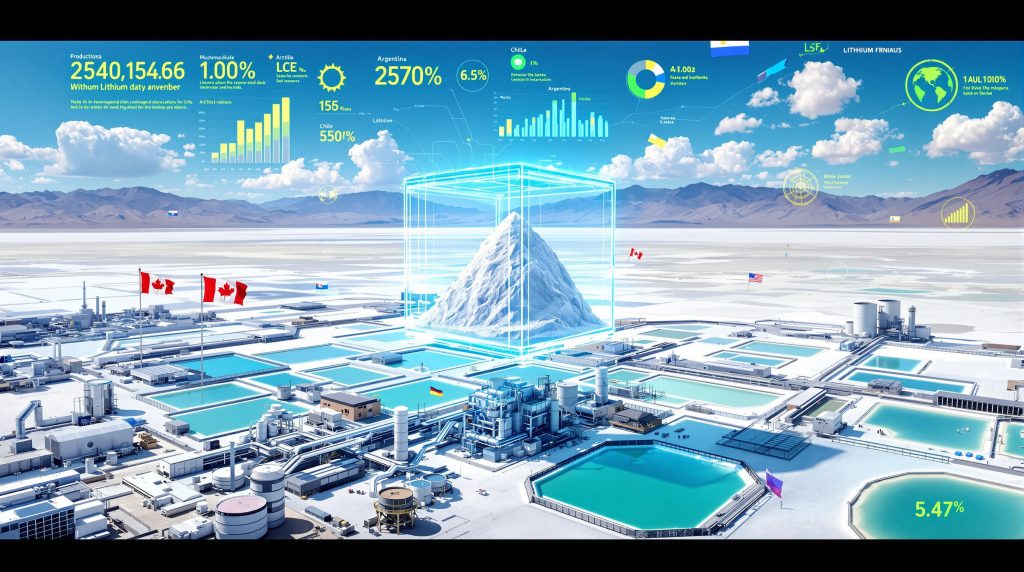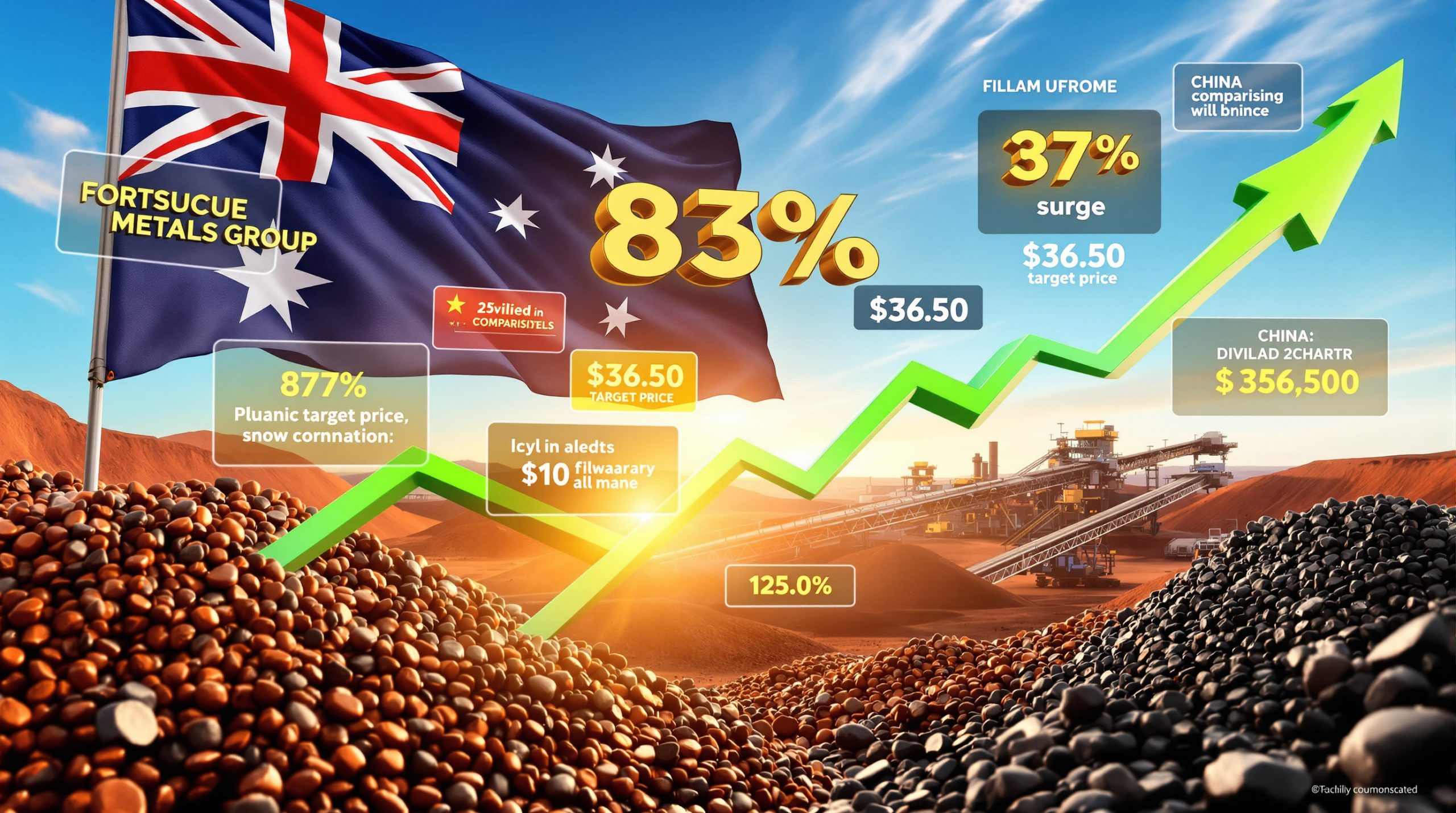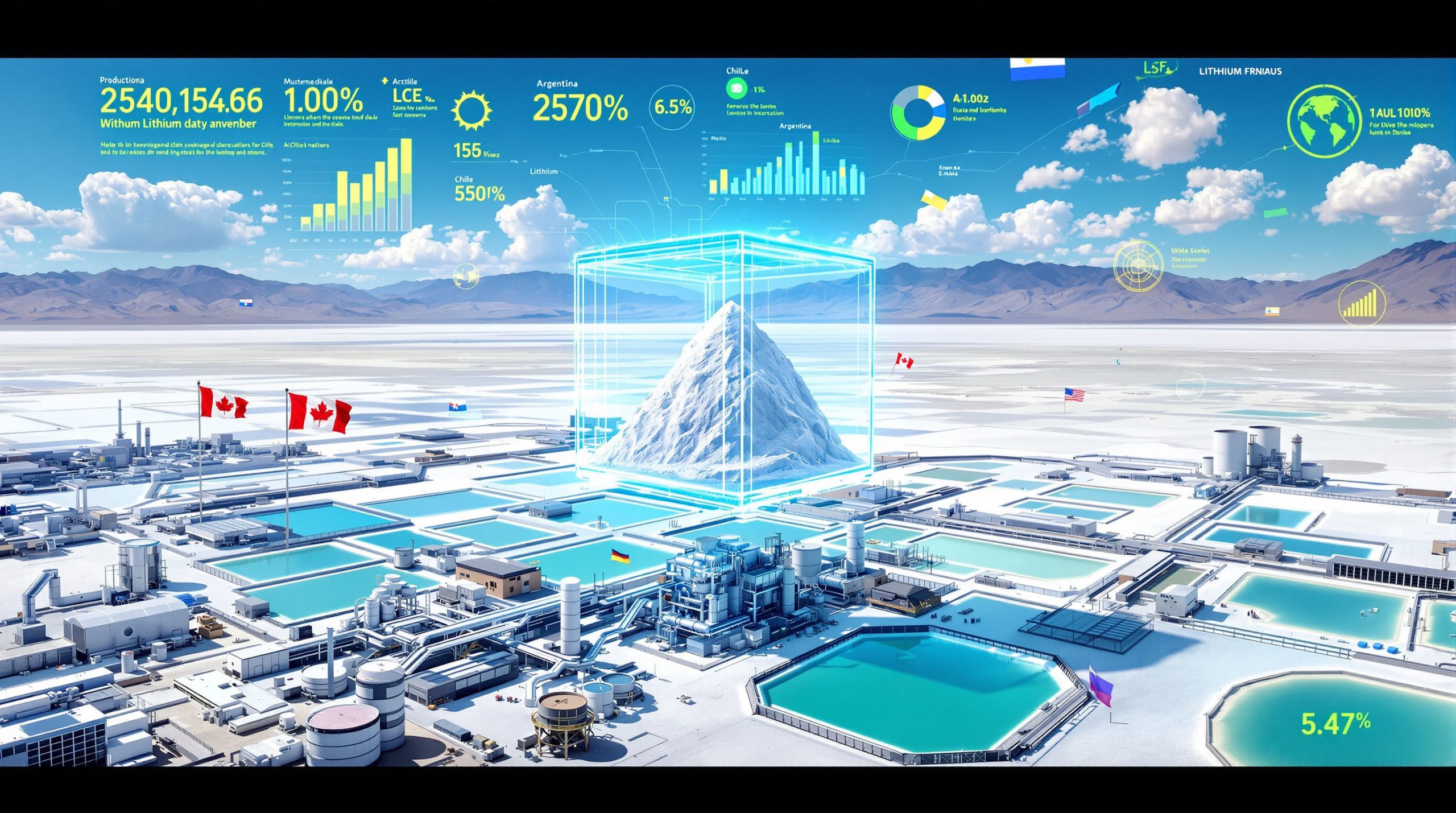The global lithium industry has transformed from a niche specialty chemical sector into one of the most critical commodity markets driving the energy transition. Understanding what separates elite mining operations from smaller players requires examining multiple interconnected factors that determine both current performance and long-term sustainability. As direct lithium extraction technology revolutionises processing efficiency, the competitive landscape continues reshaping traditional production rankings.
What Makes a Lithium Mine "Top-Tier" in Today's Market?
Production Volume and Reserve Quality
Top-tier lithium operations typically achieve annual production exceeding 20,000 tonnes lithium carbonate equivalent (LCE), with the most significant players reaching 40,000+ tonnes annually. These production volumes represent the threshold where operations can achieve meaningful economies of scale and secure long-term offtake agreements with major battery manufacturers.
Reserve quality extends beyond simple tonnage measurements to include grade concentrations and extraction efficiency rates. Premium hard rock operations maintain spodumene ore grades between 1.0-1.5% Li₂O content, while world-class brine operations feature lithium concentrations ranging from 800-1,500 mg/L. These specifications directly impact processing costs and recovery rates.
Higher-grade deposits support stronger profit margins throughout commodity price cycles. The classification of reserves as proven and probable provides investors with confidence in long-term production sustainability. Elite operations maintain reserve life exceeding 20 years, ensuring operational continuity and justifying substantial capital expenditures required for processing infrastructure and technology upgrades.
Extraction Technology and Operational Excellence
The lithium extraction landscape encompasses three primary methodologies, each offering distinct advantages depending on geological conditions and market positioning. Traditional evaporation processes, while proven over decades of operation, require 12-18 months for brine concentration and achieve recovery rates between 40-60%. Hard rock mining operations process spodumene ore immediately upon extraction, achieving recovery rates of 70-80% but requiring higher energy inputs for processing.
Direct lithium extraction represents the most significant technological advancement reshaping industry rankings. DLE technologies achieve recovery rates exceeding 90% while reducing processing timeframes from 18 months to 2-4 weeks. This dramatic improvement in operational efficiency reduces water consumption by up to 90% compared to traditional evaporation methods.
Processing capabilities and downstream integration distinguish leading operations from commodity producers. Elite mines maintain chemical-grade specifications consistently, with spodumene concentrates achieving minimum 6.0% Li₂O content and brine operations producing battery-grade lithium carbonate meeting stringent purity requirements for automotive applications.
Environmental compliance and sustainability practices have evolved from regulatory requirements to competitive advantages. Operations implementing closed-loop water systems, renewable energy integration, and comprehensive environmental monitoring systems position themselves favourably for ESG-focused investment capital and regulatory approval processes.
Strategic Market Position and Investment Appeal
Geographic diversification across major lithium-producing regions provides supply chain resilience and regulatory risk mitigation. The most valuable operations maintain strategic locations providing cost-effective access to processing facilities and end-user markets, particularly in Asia where the majority of lithium processing and battery manufacturing occurs.
Ownership structures involving major stakeholders create operational stability and access to capital markets. Joint ventures between established mining companies and lithium specialists combine operational expertise with financial resources, enabling successful project development and expansion initiatives.
Future expansion potential and pipeline projects determine long-term value creation capacity. Elite operations maintain exploration programs and feasibility studies for capacity increases, technology upgrades, and product diversification to capture value throughout the lithium supply chain.
The Global Lithium Mining Landscape: Setting the Stage
The lithium mining sector operates within a dynamic environment characterised by rapidly evolving demand patterns, technological innovations, and geopolitical considerations that collectively influence production rankings and investment flows.
Current Market Dynamics Driving Production Rankings
Global lithium demand continues expanding at compound annual growth rates between 20-25%, driven primarily by electric vehicle adoption and large-scale battery storage deployment supporting renewable energy infrastructure. This sustained growth trajectory creates opportunities for both established producers and emerging operations to capture market share.
Global Lithium Demand Growth Projections (2025-2030)
| Application Sector | 2025 Demand (tonnes LCE) | 2030 Projected Demand (tonnes LCE) | Growth Rate (CAGR) |
|---|---|---|---|
| Electric Vehicles | 850,000 | 2,200,000 | 21% |
| Energy Storage Systems | 180,000 | 580,000 | 26% |
| Consumer Electronics | 95,000 | 125,000 | 6% |
| Industrial Applications | 75,000 | 95,000 | 5% |
| Total Market | 1,200,000 | 3,000,000 | 20% |
Supply chain bottlenecks and production challenges create opportunities for operations capable of delivering consistent output. Processing capacity constraints, particularly for lithium hydroxide production required by high-nickel battery chemistries, provide premium pricing opportunities for integrated operations or those with secure offtake agreements.
Battery storage systems supporting renewable energy represent the fastest-growing demand segment. These utility-scale projects require massive lithium inputs, with individual installations consuming thousands of tonnes of lithium annually.
Geopolitical factors increasingly influence mine development priorities and investment allocation. Trade relationships, critical mineral designations, and domestic supply chain security initiatives create preferential positioning for operations in specific jurisdictions, particularly those aligned with major consuming regions.
Regional Production Hubs and Their Characteristics
The South American lithium triangle, encompassing Argentina, Bolivia, and Chile, contains approximately 60% of global lithium reserves in high-concentration brines. These operations benefit from exceptional solar evaporation conditions and lithium concentrations often exceeding 1,000 mg/L, though magnesium content and processing complexity vary significantly between individual deposits.
Australian hard rock mining dominance stems from large-scale spodumene deposits and proximity to Asian processing markets. Western Australian operations supply approximately 50% of global lithium feedstock through spodumene concentrates, with established shipping infrastructure and regulatory frameworks supporting consistent production growth.
North American emerging production centres focus on supply chain security and domestic processing capabilities. Nevada brine operations and potential clay deposits offer strategic advantages for North American battery supply chains, while Canadian operations provide access to clean hydroelectric power for processing operations.
Chinese processing and integration advantages create downstream value capture opportunities through refining capacity controlling approximately 75% of global lithium processing. This concentration provides Chinese companies with significant influence over global lithium pricing and allocation, particularly during supply constraint periods.
10. Greenbushes Lithium Mine (Australia) – The Hard Rock Pioneer
Greenbushes represents the global benchmark for hard rock lithium operations, combining decades of operational experience with continuous capacity expansion and processing optimisation. Additionally, australian lithium innovations continue advancing extraction methodologies and sustainability practices.
Production Specifications and Technical Details
Annual Output: 40,000+ tonnes LCE from spodumene concentrate processing
The operation produces approximately 1.4 million tonnes per annum of spodumene concentrate at 6% Li₂O, establishing global quality standards for chemical-grade concentrate specifications. This production volume positions Greenbushes as the single largest source of lithium feedstock globally, supplying approximately 15-20% of global lithium demand through concentrate sales.
Processing capabilities encompass two primary processing trains utilising dense media separation technology to produce spodumene concentrate from ore averaging 2.0% Li₂O. The operation maintains strict quality control protocols ensuring consistent concentrate specifications meeting requirements for downstream lithium hydroxide and carbonate production.
Integration with downstream lithium hydroxide production occurs through the Kwinana refinery in Western Australia, creating value-added products for battery applications. This vertical integration provides margin enhancement opportunities and direct exposure to battery-grade pricing premiums.
Operational Advantages and Market Position
World-class operational scale enables Greenbushes to achieve cost advantages unavailable to smaller competitors. The operation maintains C1 cash costs in the lowest quartile globally, providing sustainable profitability throughout commodity price cycles.
Joint venture structure between IGO Limited, Tianqi Lithium Corporation, and Albemarle Corporation combines operational expertise with global market access. This partnership arrangement provides operational stability and access to capital for expansion projects while distributing production across multiple marketing channels.
Strategic location advantages include established shipping infrastructure and proximity to Asian processing markets where the majority of lithium refining occurs. Direct shipping arrangements enable efficient logistics and competitive delivered pricing to key consuming regions.
Expansion initiatives include tailings retreatment projects expected to add 150,000 tonnes per year of additional concentrate capacity, extending mine life while utilising previously processed materials to increase overall resource recovery.
9. Silver Peak Lithium Mine (Nevada, USA) – North America's Veteran Producer
Silver Peak holds the distinction of being North America's longest continuously operating lithium brine facility, providing domestic supply chain security and strategic positioning within the North American battery ecosystem.
Brine Processing Excellence and Historical Significance
Comparative Brine Concentrations vs Global Competitors
| Operation | Lithium Concentration (mg/L) | Processing Method | Recovery Rate |
|---|---|---|---|
| Silver Peak (Nevada) | 200-300 | Evaporation | 45-55% |
| Atacama (Chile) | 1,400+ | Evaporation | 50-60% |
| Cauchari-Olaroz (Argentina) | 580 | Evaporation | 55-65% |
| DLE Operations (Various) | 300-800 | Direct Lithium Extraction | 90%+ |
Albemarle Corporation's operational management leverages decades of experience optimising brine processing under Nevada's arid conditions. The operation utilises solar evaporation ponds to concentrate brine over 12-18 month periods, followed by precipitation and purification processes producing battery-grade lithium carbonate.
Operational history spanning nearly 60 years provides unique insights into long-term brine aquifer management and sustainable production practices. This extended operational experience enables predictable production planning and resource management supporting consistent supply commitments.
Expansion Potential and Strategic Value
Proximity to Tesla's Nevada Gigafactory creates strategic supply chain advantages, though current production capacity represents only a fraction of regional lithium demand. The operation's location approximately 220 miles from the Gigafactory provides potential for expanded supply relationships as domestic processing capacity increases.
Domestic supply chain security implications position Silver Peak as a critical asset within U.S. critical mineral strategies. Current production provides approximately 3-5% of U.S. lithium consumption, with significant expansion potential through advanced extraction technologies.
Direct lithium extraction evaluation projects could potentially increase annual production from 5,000 to 20,000+ tonnes LCE, though implementation timelines remain dependent on technology validation and capital investment decisions. DLE implementation would dramatically improve recovery rates while reducing environmental footprint and processing timeframes.
8. Cauchari-Olaroz Lithium Project (Argentina) – High-Altitude Innovation
Cauchari-Olaroz demonstrates successful project development under extreme operating conditions, achieving commercial production at elevations exceeding 4,000 meters above sea level. Furthermore, argentinian lithium insights provide valuable context for regional development strategies.
Technical Specifications and Production Metrics
Target Production: 40,000 tonnes LCE annually from Phase 1 operations
Operating at extreme altitude presents unique engineering challenges including reduced oxygen levels (approximately 60% of sea level), extreme temperature variations, and infrastructure limitations requiring specialised equipment and procedures. These conditions necessitate enhanced worker safety protocols and equipment specifications designed for high-altitude performance.
Brine advantages in the Puna region include exceptional lithium concentrations averaging 580 mg/L with favourable magnesium-to-lithium ratios of approximately 2:1. These specifications reduce processing complexity and chemical consumption compared to higher-magnesium brines found elsewhere in the lithium triangle.
Processing methodology utilises conventional evaporation pond systems optimised for high-altitude conditions, taking advantage of intense solar radiation and low humidity to accelerate evaporation rates. The processing plant produces battery-grade lithium carbonate meeting automotive industry specifications.
Joint Venture Structure and Investment Backing
Ganfeng Lithium and Lithium Americas partnership structure combines Chinese processing expertise with North American project development capabilities. This joint venture arrangement provides access to both capital markets and downstream processing integration within China's battery supply chain.
Capital investment requirements for Phase 1 development totalled approximately $580 million, covering mine development, processing facilities, and essential infrastructure including access roads, worker accommodation, and electrical transmission connections.
Market entry timeline achieved first production in Q2 2024, with production ramp-up continuing through 2025 toward full nameplate capacity. The successful commissioning demonstrates the feasibility of large-scale lithium production under extreme environmental conditions.
Infrastructure development required construction of 90-kilometre access roads, on-site accommodation for over 1,000 workers, and electrical transmission line extensions to provide reliable power supply. These infrastructure investments support not only Cauchari-Olaroz but potential future developments in the broader region.
7. Mount Marion Lithium Mine (Australia) – Spodumene Specialist
Mount Marion operates as Australia's second-largest lithium mine by production volume, specialising in spodumene concentrate production for export to Asian processing markets.
Hard Rock Processing Capabilities
Spodumene Concentrate Grades and Recovery Rates
| Processing Stage | Input Grade | Output Grade | Recovery Rate |
|---|---|---|---|
| Run-of-Mine Ore | 1.36% Li₂O | – | – |
| Dense Media Separation | – | 6.0% Li₂O | 72% |
| Final Product | – | 6.0% Li₂O | 70-75% |
Mineral Resources Limited operational management utilises conventional open-pit mining methods combined with selective ore sorting to maintain consistent feed grades to the processing plant. The operation achieves processing plant recovery rates of 70-75% lithium recovery from ore, positioning it competitively within the global cost curve.
Processing plant capacity reaches 450,000 tonnes per year spodumene concentrate at nameplate capacity, generating approximately 27,000-30,000 tonnes LCE equivalent annually. Dense media separation technology produces chemical-grade concentrate meeting specifications for downstream lithium hydroxide and carbonate production.
Market Integration and Supply Chain Position
Direct shipping arrangements to Chinese processors, particularly Ganfeng Lithium through joint venture arrangements, ensure stable demand and pricing transparency. These integrated supply chain relationships provide operational stability and reduce marketing risks compared to spot market sales.
Cost structure advantages position Mount Marion in the lower half of the global cost curve, with C1 cash costs ranging $350-400 per tonne spodumene concentrate. This cost competitiveness supports sustainable profitability throughout commodity price cycles while maintaining expansion optionality.
Expansion feasibility studies evaluate Stage 2 expansion to 600,000 tonnes per year concentrate capacity, dependent on market conditions and capital allocation priorities. Resource extension potential exists through ongoing exploration programs targeting reserve replacement and grade optimisation.
Joint venture ownership structure combines 51% Mineral Resources Limited operational expertise with 49% Ganfeng Lithium processing integration and market access, creating value chain alignment and operational efficiency incentives.
6. Pilgangoora Lithium Mine (Australia) – Rapid Scale Achievement
Pilgangoora represents one of the mining industry's most successful rapid development stories, transitioning from construction to major global producer within a three-year timeframe.
Production Ramp-Up Success Story
Current Capacity: 580,000-680,000 tonnes spodumene concentrate nameplate capacity
Pilbara Minerals' operational excellence demonstrates successful scaling of hard rock lithium operations from greenfield development to major producer status. The operation achieved production milestones ahead of industry benchmarks while maintaining safety standards and environmental compliance.
Processing plant optimisation focuses on two primary product streams: chemical-grade concentrate for lithium hydroxide production and technical-grade concentrate for ceramic and glass applications. This product diversification provides market optionality and revenue optimisation opportunities.
Production efficiency improvements through operational experience and equipment optimisation continue increasing recovery rates and reducing unit costs. The learning curve benefits position Pilgangoora competitively as global lithium demand continues expanding.
Strategic Partnerships and Market Access
Offtake agreements with major battery manufacturers including Ganfeng Lithium, POSCO, and Yibin Tianyuan Lithium provide stable demand and pricing mechanisms supporting operational planning and capital investment decisions. These partnerships extend beyond simple purchase agreements to encompass technical cooperation and market development initiatives.
Chinese market penetration strategies leverage direct shipping arrangements enabling monthly shipments of 40,000-50,000 tonnes concentrate during peak production periods. This logistics capability supports just-in-time delivery requirements of processing facilities while maintaining cost-effective transportation.
Joint venture development with POSCO for South Korean downstream processing facilities creates integrated value chain opportunities extending beyond concentrate sales to value-added product participation. This partnership approach positions Pilgangoora for margin enhancement as battery markets mature.
Future expansion phases include the P1000 project targeting 1 million tonne per year mid-stream processing capability with Calix Limited, focusing on lithium phosphate production as an alternative product stream serving specialised battery applications.
5. Sal de Vida Lithium Project (Argentina) – Brine Processing Innovation
Sal de Vida's development history illustrates the complex corporate dynamics and strategic repositioning occurring throughout the lithium sector as companies adapt to rapidly evolving market conditions.
Advanced Extraction Technology Implementation
The project's evolution through multiple ownership structures reflects broader industry consolidation trends, with Galaxy Resources initially developing the asset before merging with Orocobre to form Allkem, subsequently merging with Livent Corporation to create Arcadium Lithium.
Brine concentration optimisation techniques developed for Sal de Vida focus on managing relatively favourable magnesium-to-lithium ratios compared to other regional operations. Located in Catamarca Province, Argentina, the project benefits from high evaporation rates due to arid climate conditions.
Environmental impact mitigation strategies emphasise sustainable brine extraction practices and closed-loop processing systems minimising freshwater consumption and environmental disturbance in the sensitive high-altitude ecosystem.
Production Timeline and Market Entry Strategy
Projected Production Phases and Capacity Targets
| Development Phase | Timeline | Capacity (tonnes LCE/year) | Capital Requirement |
|---|---|---|---|
| Stage 1 (Historical) | Delayed | 10,750 | $400M (estimated) |
| Current Status | 2024-2025 | Care & Maintenance | Under Review |
| Future Development | TBD | TBD | Under Evaluation |
Capital expenditure requirements and funding sources remain under evaluation as Arcadium Lithium assesses portfolio priorities following corporate restructuring. The project's development timeline depends on lithium market conditions and strategic resource allocation decisions within the merged entity.
Regional infrastructure development needs include road access improvements and electrical grid connections supporting both construction and operational phases. These infrastructure investments could benefit broader regional development beyond individual project requirements.
4. Thacker Pass Lithium Mine (Nevada, USA) – Future Production Giant
Thacker Pass production represents one of the world's largest undeveloped lithium deposits, with potential to significantly impact North American supply chain security upon reaching commercial production.
Massive Reserve Base and Development Potential
Estimated Reserves: 16.2 million tonnes LCE (measured and indicated resources)
Lithium Americas Corporation's development strategy focuses on clay-based extraction methodology utilising innovative processing techniques specifically designed for sedimentary lithium deposits. This approach differs significantly from traditional hard rock or brine processing, requiring specialised technology development and validation.
Clay-based extraction methodology and processing innovation represent frontier technology applications within the lithium sector. The processing approach utilises sulfuric acid leaching followed by purification and concentration stages producing battery-grade lithium carbonate.
Production targets for Phase 1 operations reach 40,000 tonnes LCE per year, with expansion potential supporting additional phases depending on market development and operational experience. The massive resource base could support decades of production at significant scale.
Regulatory Pathway and Environmental Considerations
Federal permitting progress continues advancing through environmental impact assessment and regulatory review processes required for major mining developments on federal lands. Timeline expectations extend through 2025-2026 for final permit approvals, though specific timelines depend on regulatory review completion.
Indigenous community engagement and agreement processes focus on consultation with regional tribes concerning cultural and environmental impact mitigation. These engagement processes represent essential components of social licence to operate for major resource developments.
Infrastructure development requirements encompass access roads, processing facilities, worker accommodation, and utility connections supporting operations in a remote location. Capital requirements for full development exceed $1 billion, necessitating significant financing arrangements.
3. Atacama Salt Flat Operations (Chile) – Established Brine Excellence
The Atacama Salt Flat represents the world's most established and productive lithium brine operations, with SQM and Albemarle combining to produce over 80,000 tonnes LCE annually from this single location.
SQM and Albemarle Production Dominance
Combined Annual Production and Processing Efficiency
| Operator | Annual Production (tonnes LCE) | Processing Method | Market Focus |
|---|---|---|---|
| SQM | ~45,000 | Evaporation + Processing | Lithium Hydroxide |
| Albemarle | ~35,000+ | Evaporation + Processing | Lithium Carbonate |
| Combined Total | ~80,000+ | Optimised Systems | Global Supply |
Evaporation pond systems utilise decades of operational optimisation achieving industry-leading efficiency rates despite relatively complex brine chemistry. Processing efficiency improvements through technology upgrades and operational experience continue enhancing recovery rates and product quality.
Decades of operational experience provide unmatched institutional knowledge regarding brine aquifer management, seasonal production optimisation, and quality control procedures. This operational expertise creates competitive advantages difficult for newer operations to replicate quickly.
Resource Sustainability and Future Outlook
Brine aquifer management and environmental monitoring programs ensure sustainable production rates while maintaining ecological balance within the sensitive Atacama ecosystem. These programs involve comprehensive hydrological studies and environmental impact assessments supporting long-term operational permits.
Chilean government quota systems and regulatory framework establish production limits and environmental standards governing lithium extraction activities. Recent regulatory developments focus on increased government participation in lithium development while maintaining operational efficiency.
Technology upgrades and capacity expansion possibilities include direct lithium extraction pilot programs potentially increasing recovery rates while reducing environmental impact. DLE implementation could significantly enhance production efficiency and sustainability metrics.
2. Zabuye Salt Lake (Tibet, China) – High-Altitude Processing Marvel
Zabuye Salt Lake operates as China's most significant domestic lithium production facility, providing supply chain security while demonstrating successful extraction under extreme environmental conditions.
Unique Geographic and Technical Advantages
Elevation: 4,400 meters above sea level with exceptional processing conditions
Exceptional brine concentrations and processing efficiency result from unique geological conditions creating highly concentrated lithium brines with favourable chemistry for extraction processes. These natural advantages provide cost benefits and processing efficiency improvements compared to lower-grade deposits.
Tibet Summit Resources operational management leverages specialised high-altitude operational expertise and equipment designed for extreme environmental conditions. Operating procedures account for reduced oxygen levels, extreme temperature variations, and logistical challenges associated with remote location access.
Processing technology innovations for extreme conditions include specialised equipment and procedures adapted for high-altitude operations. These innovations demonstrate Chinese technological capabilities in challenging extraction environments while maintaining commercial production rates.
Strategic Importance in Chinese Supply Chain
Domestic production security and supply chain integration position Zabuye as a strategic asset within China's critical mineral supply chains. The operation provides domestic supply reducing dependence on imported lithium feedstock for China's battery manufacturing sector.
Processing technology innovations developed at Zabuye contribute to broader Chinese capabilities in lithium extraction and processing. These technological developments support China's global competitiveness in lithium processing and battery manufacturing sectors.
Market position within China's lithium ecosystem provides direct supply to domestic processing facilities and battery manufacturers, creating integrated value chains supporting China's electric vehicle and energy storage industries.
1. Salar de Uyuni (Bolivia) – The World's Lithium Treasure Trove
Salar de Uyuni contains the world's largest lithium reserves, representing potential to fundamentally reshape global lithium supply dynamics upon achieving commercial-scale production.
Unmatched Reserve Potential and Global Significance
Estimated Reserves: 21+ million tonnes LCE (world's largest identified resource)
Government-controlled development approach reflects Bolivia's strategic approach to natural resource development, maintaining state ownership and control over lithium extraction activities. This approach prioritises long-term national benefit while requiring international partnerships for technology and capital access.
Technical challenges in high-magnesium brine processing require advanced separation technologies managing complex brine chemistry. Magnesium-to-lithium ratios exceeding 10:1 necessitate sophisticated processing approaches compared to lower-magnesium deposits elsewhere in the lithium triangle.
Resource magnitude represents approximately 30-40% of known global lithium reserves, concentrated in a single location providing potential for massive-scale production supporting global battery industry growth for decades.
Development Progress and International Partnerships
Pilot Project Results and Scaling Challenges
| Development Phase | Status | Technology Partner | Production Target |
|---|---|---|---|
| Pilot Plant Operations | Completed | Various | 1-5 tonnes/month |
| Demonstration Scale | In Progress | Russian/Chinese | 500+ tonnes/year |
| Commercial Phase 1 | Planning | Under Negotiation | 15,000-25,000 tonnes/year |
| Full Development | Conceptual | TBD | 50,000+ tonnes/year |
Russian and Chinese technology partnerships provide access to specialised extraction technologies and processing capabilities required for high-magnesium brine processing. These partnerships combine international expertise with Bolivian resource ownership creating development pathways for commercial production.
Infrastructure development needs encompass transportation, utilities, worker accommodation, and processing facilities in remote high-altitude locations. Investment requirements for full development exceed several billion dollars, necessitating significant international partnership arrangements.
Market Impact and Future Production Scenarios
Potential to reshape global lithium supply dynamics exists if commercial production achieves significant scale. Full development could supply 15-25% of projected global lithium demand by 2035, significantly impacting pricing and supply security globally.
Timeline projections for commercial production extend through the late 2020s or early 2030s, dependent on technology validation, infrastructure development, and partnership agreements. Complex processing requirements and government approval processes contribute to extended development timelines.
Geopolitical implications of Bolivian lithium development include potential shifts in global lithium supply chain dependencies and pricing power. Large-scale production would reduce global dependence on current major suppliers while providing Bolivia with significant economic benefits.
How Direct Lithium Extraction Is Reshaping Mine Rankings
Direct lithium extraction technology represents the most significant innovation reshaping lithium production capabilities and competitive positioning across the global industry. Meanwhile, advances in direct lithium extraction technology continue improving processing efficiency and environmental performance across various deposit types.
Technology Advantages Over Traditional Methods
DLE Recovery Rates: 90%+ versus 40-60% for traditional evaporation methods
Processing time reduction from 18 months to 2-4 weeks fundamentally changes project economics and capital efficiency. This dramatic reduction in processing time enables faster response to market demand while reducing working capital requirements and operational complexity.
Water usage minimisation represents critical environmental and operational advantages, particularly in water-scarce regions where traditional evaporation methods face sustainability concerns. DLE technologies reduce water consumption by up to 90% compared to evaporation processes while achieving higher recovery rates.
Environmental benefits extend beyond water conservation to include reduced land use requirements and faster site rehabilitation capabilities. DLE processing facilities maintain smaller environmental footprints while achieving superior production efficiency metrics.
Investment Flows and Operational Transitions
Oil and gas industry involvement in DLE development brings significant capital resources and technological expertise from sectors with established extraction and processing capabilities. Major oil service companies including Schlumberger are developing DLE technologies and operational capabilities.
Capital requirements for DLE implementation typically range $300-600 million depending on scale and processing complexity, compared to $400-800 million for traditional hard rock operations. These capital advantages create opportunities for more efficient resource development.
Technology scaling challenges include equipment reliability, processing optimisation, and operational experience development. As DLE technologies mature, operational costs and technical risks continue decreasing while efficiency improvements expand implementation opportunities.
Future mine rankings increasingly depend on extraction efficiency and environmental performance rather than simply resource size or grade. Operations implementing advanced extraction technologies position themselves competitively for long-term market participation and regulatory approval.
Investment Implications and Market Outlook
The global lithium market's evolution toward becoming one of the six or seven most important commodities creates significant investment opportunities while introducing new risk factors and market dynamics.
Supply Security and Geopolitical Considerations
Regional Production Distribution and Supply Risks
| Region | Current Production Share | Key Risks | Strategic Advantages |
|---|---|---|---|
| Australia | ~50% | Processing dependence on China | Resource diversity, stable jurisdiction |
| South America | ~35% | Water scarcity, political risk | High-grade resources, low costs |
| China | ~10% | Domestic focus, limited exports | Processing integration, technology |
| North America | ~5% | Limited production, high costs | Supply chain security, technology |
Critical mineral designation impacts on investment create preferential treatment for domestic supply chain development in major consuming regions. Government support includes tax incentives, loan guarantees, and streamlined permitting processes for strategic mineral projects.
Trade relationship effects on lithium supply chains influence investment flows and operational strategies. Companies increasingly prioritise supply chain security and regulatory alignment over pure cost optimisation in strategic planning decisions.
Future Production Capacity and Demand Matching
Projected demand growth at 20-25% compound annual growth rate requires massive capacity increases across all extraction methodologies. Total global production capacity must triple or quadruple by 2030 to meet projected demand from electric vehicles and energy storage systems.
Battery technology evolution continues requiring lithium across all chemistry developments, with solid-state batteries and advanced chemistries maintaining lithium requirements. Twenty leading battery chemistries under development all utilise lithium as primary active material.
Market maturation and pricing environment development toward more sophisticated futures markets and pricing mechanisms similar to other major commodities. This maturation reduces price volatility while providing better price discovery and risk management tools for industry participants.
Key Takeaways for Lithium Market Participants
The transformation of lithium from specialty chemical to major commodity creates opportunities for investors, miners, and supply chain participants while requiring sophisticated understanding of technological and market developments.
Production Hierarchy and Competitive Positioning
Reserve size versus current production capacity distinctions highlight the difference between resource potential and operational reality. Many large resources require years of development and significant capital investment before contributing to supply, creating opportunities for efficient operators to capture market share during supply constraint periods.
Technology adoption rates and operational efficiency factors increasingly determine competitive positioning. Operations implementing direct lithium extraction and other advanced technologies achieve superior recovery rates, environmental performance, and capital efficiency compared to traditional extraction methods.
Market access and supply chain integration importance grows as battery manufacturers seek secure, reliable supply relationships. Integrated operations with downstream processing capabilities or long-term offtake agreements maintain pricing stability and operational certainty unavailable to spot market participants.
Investment Strategy Considerations
The top lithium mines combine massive reserves, proven extraction technology, and strategic market positioning to dominate global supply chains serving the rapidly expanding electric vehicle and energy storage markets.
Risk assessment across different extraction methodologies requires understanding technological maturity, capital requirements, environmental factors, and market acceptance. Direct lithium extraction represents frontier technology with exceptional potential but limited operational history compared to traditional methods.
Timeline expectations for emerging production centres vary significantly depending on technological approach, regulatory environment, and infrastructure requirements. Investors should maintain realistic expectations regarding development timelines while recognising the substantial value creation potential of successful projects.
The lithium market's continued evolution toward commodity status creates opportunities for sophisticated investors capable of analysing technological trends, supply chain dynamics, and regulatory developments influencing long-term competitive positioning within this critical sector driving the global energy transition.
Ready to Capitalise on the Next Major Lithium Discovery?
Discovery Alert's proprietary Discovery IQ model delivers real-time alerts on significant lithium and mineral discoveries across the ASX, instantly empowering subscribers to identify actionable opportunities ahead of the broader market. Understand why historic discoveries can generate substantial returns by exploring Discovery Alert's dedicated discoveries page, showcasing proven examples of exceptional outcomes.




